What does nano mean in linux?
In Linux, nano is a character terminal text editor, a copy of Pico; it is much simpler than vi/vim, and is more suitable for Linux beginners. The default editor for some Linux distributions is nano. The nano command can open the specified file for editing. By default, it will automatically break lines, that is, when inputting too long content in one line, it will automatically split it into several lines.
Introduction to nano
nano is a text editor in Unix and Unix-like systems (including Linux) and is a copy of Pico.
Pico is a text editing program written and maintained by the Computing and Communications Group at the University of Washington.
Similar to the editor program under DOS, nano is a text editor based on character terminals. It is much simpler than vi/vim and is more suitable for Linux beginners. The default editor for some Linux distributions is nano.
The nano command can open the specified file for editing. By default, it will automatically break lines, that is, automatically split into several lines when too long content is entered in one line. However, some files are processed in this way. It may cause problems. For example, in the configuration file of the Linux system, automatic line breaking will cause the content that can only be written on one line to be broken into multiple lines, which may cause the system to malfunction. Therefore, if you want to avoid this situation, add the -w option.
nano features
Small and friendly
No installation required
Provides many additional features
Interactive find and replace
Locate to specified row
Auto-indent
Feature switching
International support
Filename mark completion
Syntax
nano [选项] [[+行,列] 文件名]...
Options
-h ,-? --help Display this information
Rows, columns start from the indicated column number and row number
-A --smarthome Enable smart HOME key
-B --backup Store backup of existing files
-C --backupdir= Used to store unique files Directory of backup files
-D --boldtext Use bold instead of color inversion
-E --tabstospaces Replace the entered system Convert table characters to blank
-F --multibuffer Enable multiple file buffer function
-H --historylog Record and read search /Replaced historical string
-I --ignorercfiles Do not refer to nanorc files
-K --rebindkeypad Fix numeric keypad key confusion Problem
-L --nonewlines Do not add newlines to the end of the file
-N --noconvert Do not convert from DOS/Mac format
-O --morespace Use one more line when editing
-Q --quotestr= Quote representative string
-R --restricted restricted mode
-S --smooth scroll by row instead of half screen
-T --tabsize= Set the tab width to #number of columns
-U --quickblank Flash the status line quickly
-V --version Show version information and exit
-W --wordbounds Detect word boundaries more accurately
-Y --Syntax= Syntax definition for highlighting
-c --const Continuously display cursor position
-d --rebinddelete Fix backspace key/ Delete key confusion problem
-i --autoindent Automatically indent new lines
-k --cut Cut from the cursor to the end of the line
-l --nofollow Do not follow symbolic links, but overwrite them
-m --mouse Enable mouse function
-o --operatingdir= Set operating directory
-
-p --preserve Preserve XON (^Q) and XOFF (^S) buttons
-q --quiet Silently ignore startup problems, such as rc file errors
-r --fill= Set the wrap width to # number of columns
-s --speller= Enable alternative spell checker
-t --tempfile Automatically save on exit, don't prompt
-u --undo Allow universal undo [Experimental feature]
-v --view View (read-only) mode
-w --nowrap Do not automatically wrap lines
-x --nohelp Do not display the auxiliary area
- z --suspend Enable suspension function
-$ --softwrap Enable soft newline
-a,-b,-e,
-f,-g,-j (ignored for compatibility with pico)
Run nano
Two ways to run nano
① Directly enter nano
②nano followed by the target file nano /path /to/filename
After nano is successfully run, as shown below

You can see the version number of nano and the file being edited at the top Whether the name and file have changed since the last save
If you open a new file, New File will be prompted. The explicit message here is not fixed, but mainly displays information related to the program that performs the function.

The last two lines are shortcut keys
Shortcut keys
Although nano lists the most commonly used one in the last two lines Group functions, but there are many other functions that are not listed. Please note that Shift is not used as a shortcut key in nano, so ^G is not equivalent to Ctrl Shift G, but Ctrl G
Ctrl O: Save file
Ctrl R: Miscellaneous current file Insert the content of another file into
Ctrl C: Cancel the previous command
Ctrl X: Exit nano, you will be prompted whether to save
Ctrl C: The current cursor position
Ctrl F: →
Ctrl B: ←
Ctrl P: ↑
Ctrl N: ↓
Ctrl A: One line The beginning of a line
Ctrl E: The end of a line
Ctrl V: Turn one page forward
Ctrl Y: Turn one page backward
nano use
1. New file/open file
| nano file name | Open an old file or a new file For editing, that is, you can open the file regardless of whether it exists or not |
|---|
nano nano.txt# in the terminal ##Command:
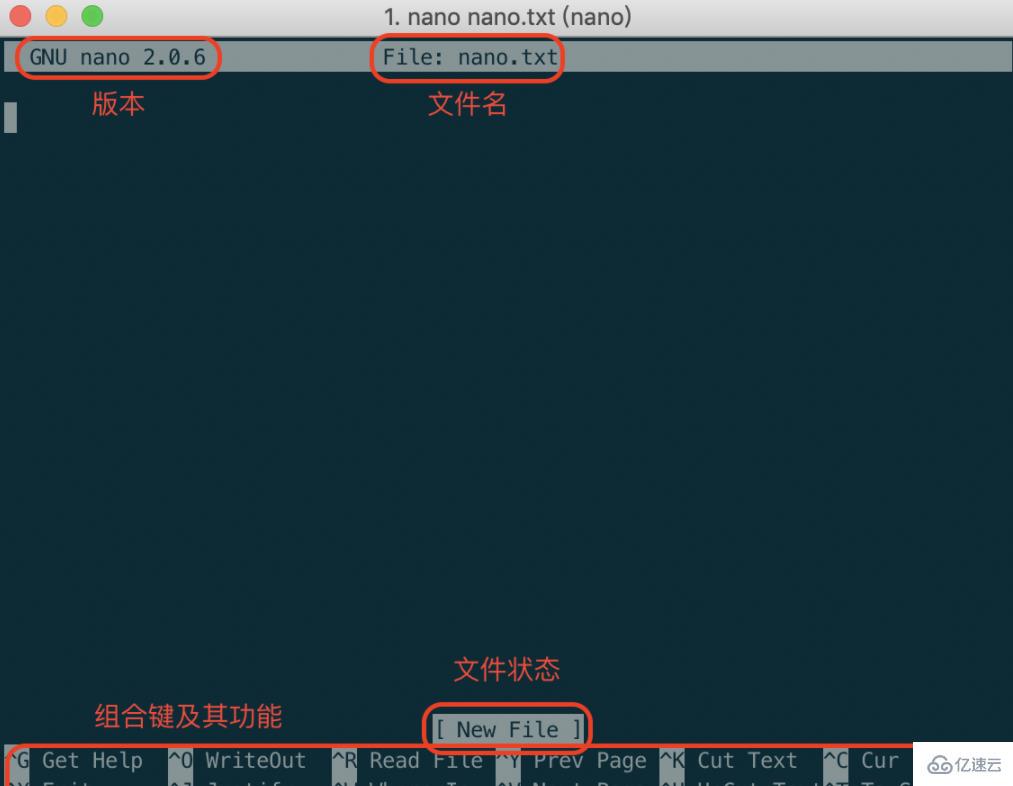 2. Online help
2. Online help
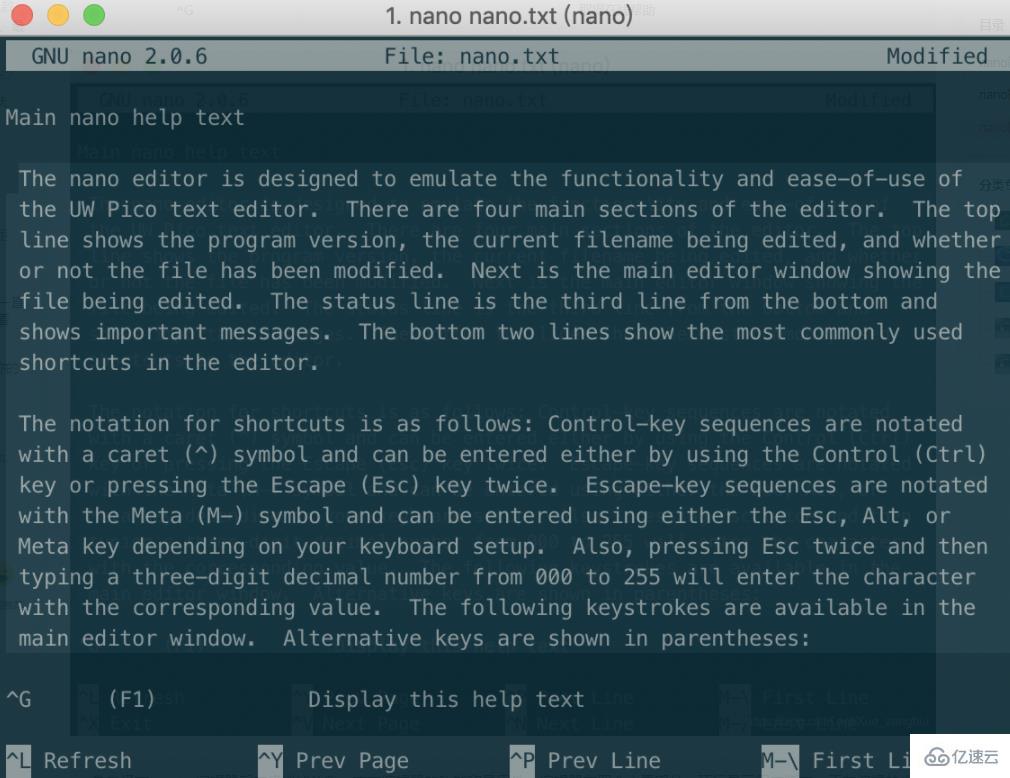
3. Save the file
4. Exit nano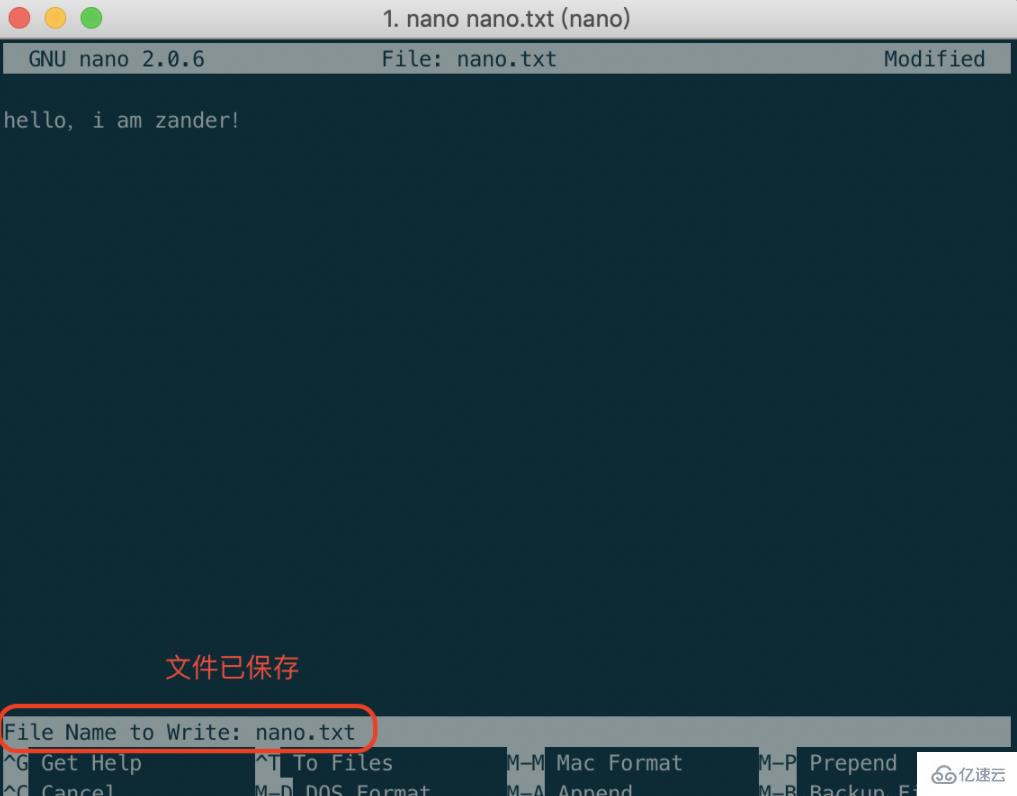
5. Query characters String 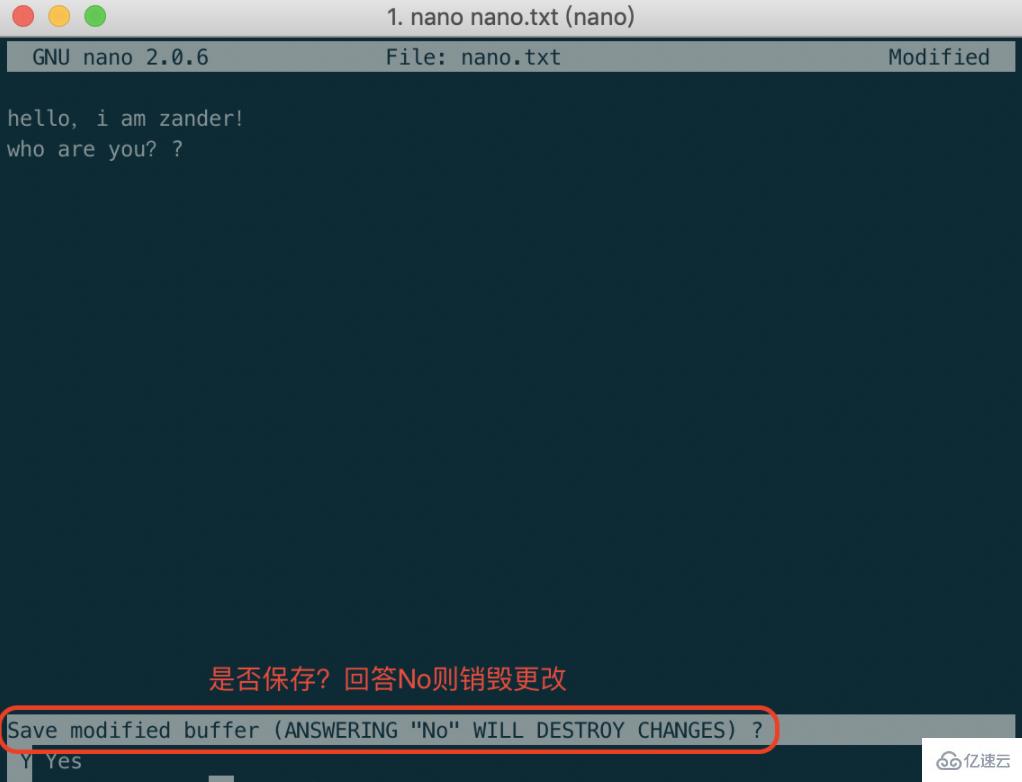
7. Move the cursor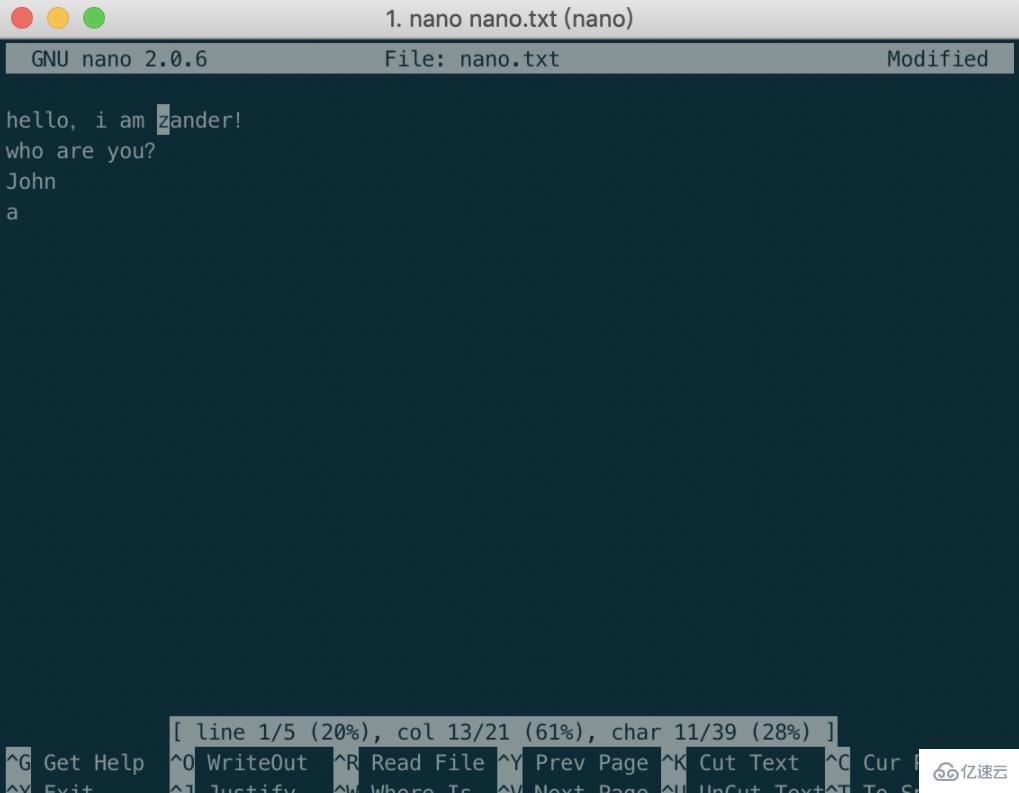
8. Move to File header/tail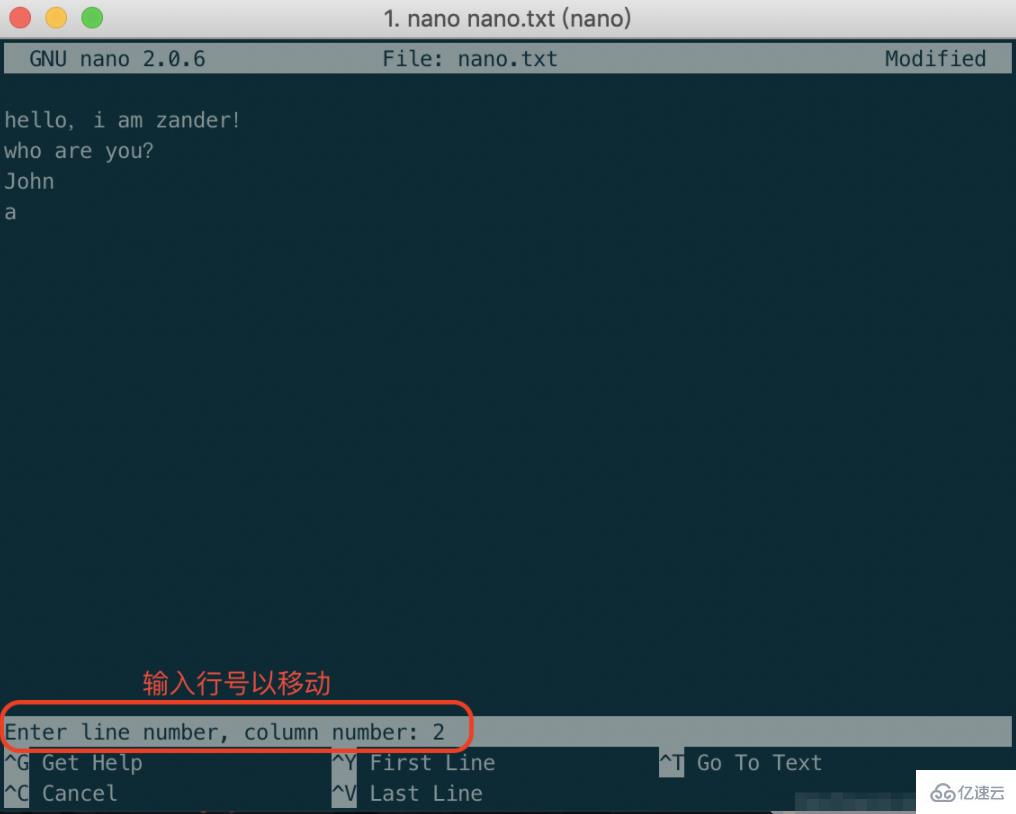
| ^V | |
The above is the detailed content of What does nano mean in linux?. For more information, please follow other related articles on the PHP Chinese website!

Hot AI Tools

Undresser.AI Undress
AI-powered app for creating realistic nude photos

AI Clothes Remover
Online AI tool for removing clothes from photos.

Undress AI Tool
Undress images for free

Clothoff.io
AI clothes remover

Video Face Swap
Swap faces in any video effortlessly with our completely free AI face swap tool!

Hot Article

Hot Tools

Notepad++7.3.1
Easy-to-use and free code editor

SublimeText3 Chinese version
Chinese version, very easy to use

Zend Studio 13.0.1
Powerful PHP integrated development environment

Dreamweaver CS6
Visual web development tools

SublimeText3 Mac version
God-level code editing software (SublimeText3)

Hot Topics
 1386
1386
 52
52
 How to use docker desktop
Apr 15, 2025 am 11:45 AM
How to use docker desktop
Apr 15, 2025 am 11:45 AM
How to use Docker Desktop? Docker Desktop is a tool for running Docker containers on local machines. The steps to use include: 1. Install Docker Desktop; 2. Start Docker Desktop; 3. Create Docker image (using Dockerfile); 4. Build Docker image (using docker build); 5. Run Docker container (using docker run).
 How to view the docker process
Apr 15, 2025 am 11:48 AM
How to view the docker process
Apr 15, 2025 am 11:48 AM
Docker process viewing method: 1. Docker CLI command: docker ps; 2. Systemd CLI command: systemctl status docker; 3. Docker Compose CLI command: docker-compose ps; 4. Process Explorer (Windows); 5. /proc directory (Linux).
 Difference between centos and ubuntu
Apr 14, 2025 pm 09:09 PM
Difference between centos and ubuntu
Apr 14, 2025 pm 09:09 PM
The key differences between CentOS and Ubuntu are: origin (CentOS originates from Red Hat, for enterprises; Ubuntu originates from Debian, for individuals), package management (CentOS uses yum, focusing on stability; Ubuntu uses apt, for high update frequency), support cycle (CentOS provides 10 years of support, Ubuntu provides 5 years of LTS support), community support (CentOS focuses on stability, Ubuntu provides a wide range of tutorials and documents), uses (CentOS is biased towards servers, Ubuntu is suitable for servers and desktops), other differences include installation simplicity (CentOS is thin)
 What to do if the docker image fails
Apr 15, 2025 am 11:21 AM
What to do if the docker image fails
Apr 15, 2025 am 11:21 AM
Troubleshooting steps for failed Docker image build: Check Dockerfile syntax and dependency version. Check if the build context contains the required source code and dependencies. View the build log for error details. Use the --target option to build a hierarchical phase to identify failure points. Make sure to use the latest version of Docker engine. Build the image with --t [image-name]:debug mode to debug the problem. Check disk space and make sure it is sufficient. Disable SELinux to prevent interference with the build process. Ask community platforms for help, provide Dockerfiles and build log descriptions for more specific suggestions.
 What computer configuration is required for vscode
Apr 15, 2025 pm 09:48 PM
What computer configuration is required for vscode
Apr 15, 2025 pm 09:48 PM
VS Code system requirements: Operating system: Windows 10 and above, macOS 10.12 and above, Linux distribution processor: minimum 1.6 GHz, recommended 2.0 GHz and above memory: minimum 512 MB, recommended 4 GB and above storage space: minimum 250 MB, recommended 1 GB and above other requirements: stable network connection, Xorg/Wayland (Linux)
 vscode cannot install extension
Apr 15, 2025 pm 07:18 PM
vscode cannot install extension
Apr 15, 2025 pm 07:18 PM
The reasons for the installation of VS Code extensions may be: network instability, insufficient permissions, system compatibility issues, VS Code version is too old, antivirus software or firewall interference. By checking network connections, permissions, log files, updating VS Code, disabling security software, and restarting VS Code or computers, you can gradually troubleshoot and resolve issues.
 Detailed explanation of docker principle
Apr 14, 2025 pm 11:57 PM
Detailed explanation of docker principle
Apr 14, 2025 pm 11:57 PM
Docker uses Linux kernel features to provide an efficient and isolated application running environment. Its working principle is as follows: 1. The mirror is used as a read-only template, which contains everything you need to run the application; 2. The Union File System (UnionFS) stacks multiple file systems, only storing the differences, saving space and speeding up; 3. The daemon manages the mirrors and containers, and the client uses them for interaction; 4. Namespaces and cgroups implement container isolation and resource limitations; 5. Multiple network modes support container interconnection. Only by understanding these core concepts can you better utilize Docker.
 What is vscode What is vscode for?
Apr 15, 2025 pm 06:45 PM
What is vscode What is vscode for?
Apr 15, 2025 pm 06:45 PM
VS Code is the full name Visual Studio Code, which is a free and open source cross-platform code editor and development environment developed by Microsoft. It supports a wide range of programming languages and provides syntax highlighting, code automatic completion, code snippets and smart prompts to improve development efficiency. Through a rich extension ecosystem, users can add extensions to specific needs and languages, such as debuggers, code formatting tools, and Git integrations. VS Code also includes an intuitive debugger that helps quickly find and resolve bugs in your code.




